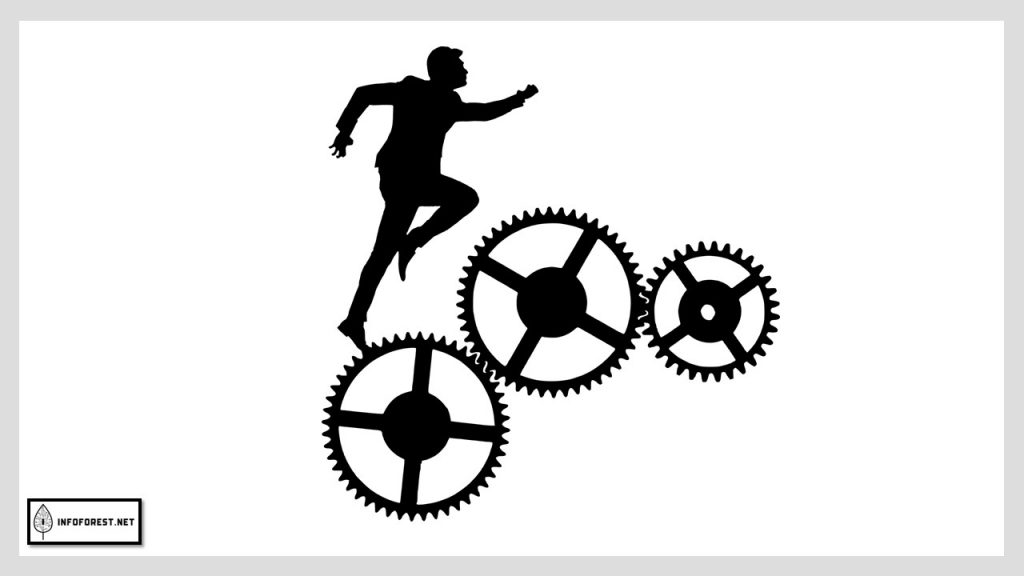
Six Sigma is a data-driven, continuous improvement methodology that aims to reduce defects and improve efficiency in business processes. It is based on the principle of minimizing defects by identifying and removing the root causes of variability and improving quality. Six Sigma is characterized by its use of statistical analysis and a structured, team-oriented approach to process improvement. It involves defining, measuring, analyzing, improving, and controlling processes to reach a target of 3.4 defects per million opportunities, which is equivalent to six standard deviations from the mean. The implementation of Six Sigma can lead to improved customer satisfaction, reduced costs, and increased profits for organizations.
Six Sigma
Six Sigma is a quality management methodology that was first introduced by Motorola in 1986. It is a data-driven, customer-focused approach to improving processes and reducing defects in order to achieve a level of quality that is near perfection. The term “Six Sigma” refers to the goal of achieving a process that is six standard deviations from the mean, which equates to a rate of 3.4 defects per million opportunities.
The Six Sigma methodology is based on a structured, five-step problem-solving process known as DMAIC (Define, Measure, Analyze, Improve, and Control). The DMAIC process is used to identify and eliminate the root causes of defects in a process. The process starts with defining the problem and determining the project’s goals and objectives. Next, data is collected and analyzed to identify patterns and relationships that may contribute to the problem. Based on the analysis, improvements are identified and implemented, and the process is continuously monitored and controlled to ensure the improvements are sustained.
Six Sigma also includes a set of tools and techniques, such as statistical process control, process mapping, and hypothesis testing, that are used to support the DMAIC process. Six Sigma projects are led by Six Sigma Green Belts, Black Belts, and Master Black Belts, who have received specialized training in the methodology.
The ultimate goal of this methodology is to improve customer satisfaction, reduce costs, and increase profits for organizations by reducing the number of defects and improving the efficiency of their processes. The methodology has been widely adopted in a variety of industries, including manufacturing, healthcare, finance, and service industries, and has been credited with significant improvements in quality and performance.

7 Key Principles
- Customer Focus: Six Sigma prioritizes the needs and expectations of the customer and seeks to improve processes to meet those needs.
- Data-Driven Decision Making: Six Sigma uses data and statistical analysis to make informed decisions and to measure the success of process improvements.
- Empowerment: this methodology empowers employees to identify and solve problems, and to improve processes in a structured and systematic manner.
- Continual Improvement: Six Sigma is a continuous improvement methodology that seeks to identify and eliminate the root causes of defects and variability in processes.
- Leadership: Six Sigma requires strong leadership to ensure the methodology is implemented effectively and to provide the resources necessary for success.
- Collaboration: this methodology uses a team-based approach to problem-solving, with individuals from different areas of the organization working together to improve processes.
- Process Management: Six Sigma focuses on managing processes, rather than individuals, to ensure consistent and effective performance over time.
By following these principles, organizations can improve the efficiency and quality of their processes, resulting in increased customer satisfaction, reduced costs, and increased profits.
We also invite you not to miss our other popular articles such as:
Difference Between Rose Gold and Yellow Gold– ChatGPT–Difference between left and right Twix–Difference Between Eastern Time Zone and Central Time Zone–Difference Between Capitalism and Communism– Difference Between EST and EDT–How many weeks in a Year– Difference Between Evening and Afternoon – Democrat vs Republican
Levels
Six Sigma has several levels of certification and training, which reflect the level of expertise and responsibility of individuals in the methodology. The main levels are:
- White Belt: A basic understanding of Six Sigma principles and methodology.
- Yellow Belt: A more in-depth understanding of Six Sigma principles and an ability to participate in process improvement projects.
- Green Belt: A Six Sigma practitioner who is trained in the DMAIC process and the use of Six Sigma tools and techniques. Green Belts often lead smaller process improvement projects.
- Black Belt: A Six Sigma expert who is responsible for leading and mentoring Green Belt teams, and for leading complex, cross-functional process improvement projects.
- Master Black Belt: A highly experienced Six Sigma professional who provides leadership and strategic direction for an organization’s Six Sigma program, and who provides coaching and mentoring to Black Belts and Green Belts.
Individuals who achieve certification have demonstrated their ability to apply the methodology and use the tools and techniques effectively. these levels of certification are typically achieved through a combination of training and experience and are recognized by employers as evidence of expertise in process improvement and quality management.

Six Sigma Techniques
Six Sigma uses several techniques to support the DMAIC (Define, Measure, Analyze, Improve, and Control) process. Some of the most common techniques include:
- Process Mapping: A visual representation of a process, used to understand and analyze the flow of activities, materials, and information.
- Statistical Process Control (SPC): A set of statistical methods used to monitor and control processes to ensure they are operating within specified limits.
- Fishbone Diagram (Ishikawa Diagram): A tool used to identify the possible causes of a problem by analyzing the relationships between various factors.
- Pareto Chart: A bar graph that represents the relative importance of different factors contributing to a problem, used to prioritize areas for improvement.
- Control Charts: A tool used to monitor process performance over time and to detect the presence of special cause variation, which indicates that a process has shifted outside of its normal operating range.
- Hypothesis Testing: A statistical method used to test a theory or hypothesis about the relationship between variables.
- Design of Experiments (DOE): A structured approach to experimentation that helps determine the relationship between process inputs and outputs.
- Root Cause Analysis: A structured process used to identify the underlying causes of a problem.
- FMEA (Failure Modes and Effects Analysis): A technique used to identify and prioritize potential failure modes in a process, and to evaluate the risk associated with each mode.
- Regression Analysis: A statistical method used to model the relationship between a dependent variable and one or more independent variables.
These techniques are used to collect, analyze, and interpret data in order to identify the root causes of defects and variability in a process and to make data-driven decisions about improvements. The use of Six Sigma techniques helps ensure a consistent, systematic, and objective approach to process improvement.
Difference Between Six Sigma and Lean Six Sigma
Six Sigma and Lean Six Sigma are both process improvement methodologies that use data and statistical analysis to identify and eliminate waste, defects, and variability in processes. However, they have some key differences:
- Focus: Six Sigma focuses primarily on improving quality and reducing defects in a process, while Lean Six Sigma also focuses on reducing waste and increasing efficiency.
- Tools and Techniques: Six Sigma uses a range of statistical tools and techniques to support the DMAIC (Define, Measure, Analyze, Improve, and Control) process, while Lean Six Sigma also uses tools and techniques from the Lean methodology, such as value stream mapping, to identify and eliminate waste.
- Problem-Solving Approach: Six Sigma uses a problem-solving approach that is structured and data-driven, while Lean Six Sigma also includes elements of continuous improvement, such as visual management, standard work, and team involvement.
- Implementation: Six Sigma is typically implemented as a top-down initiative, with Black Belts leading projects and Green Belts providing support. Lean Six Sigma is often implemented as a bottom-up initiative, with teams working together to identify and eliminate waste in their processes.
In summary, Lean Six Sigma is a combination of the data-driven quality improvement methodologies of Six Sigma and the waste reduction and efficiency improvement principles of the Lean methodology. It provides a comprehensive approach to process improvement that addresses both quality and efficiency and involves teams and employees in the improvement process.
Most Viewed Articles
Conclusion
In conclusion, Six Sigma levels of certification provide a structured framework for individuals to develop and demonstrate their expertise in the methodology. From White Belt to Master Black Belt, these levels reflect increasing levels of knowledge, skill, and responsibility in applying the methodology to process improvement projects. Achieving Six Sigma certification requires a combination of training and experience, and demonstrates a commitment to continuous improvement and a high level of proficiency in using its tools and techniques.
The Six Sigma levels provide a recognized benchmark for individuals and organizations in terms of process improvement capability and expertise. They also provide a structure for organizations to build their internal Six Sigma capacity and ensure a consistent, data-driven approach to process improvement across the organization.
Overall, Six Sigma levels of certification are a valuable investment for individuals and organizations looking to improve quality, reduce defects and waste, and drive process improvement.
We also invite you not to miss our other popular articles such as:
What is NFT–What is a Recession– What Is Bitcoin– What Is PayPal and How Does it Work – Kilometer vs Mile – How to get rid of hiccups What does TBH mean – What does NSFW mean – What does IG mean–What does CAP mean– What is normal blood pressure –What is the rarest blood type–Difference Between Hotel And Motel – Differences Between Chinese and Japanese and Difference Between Zip Code and Postal Code







